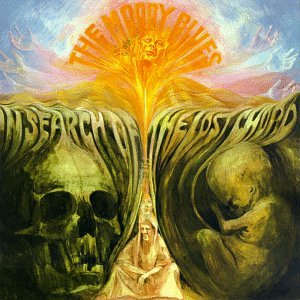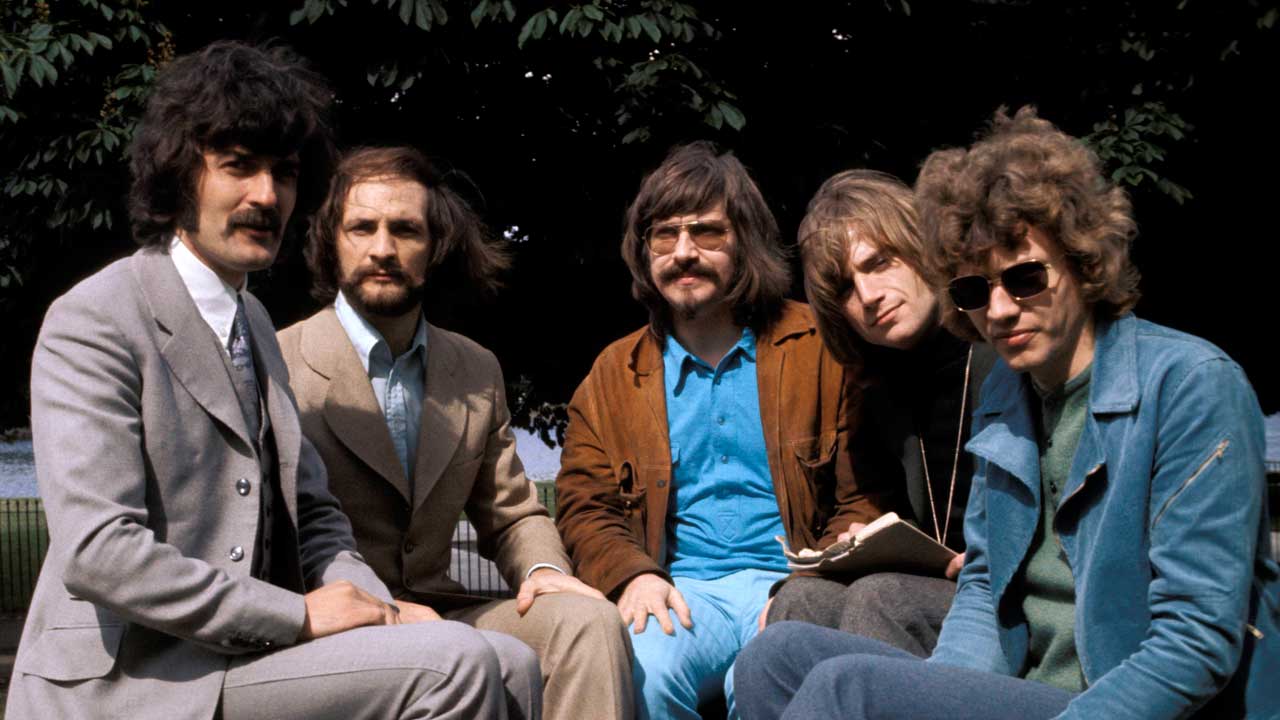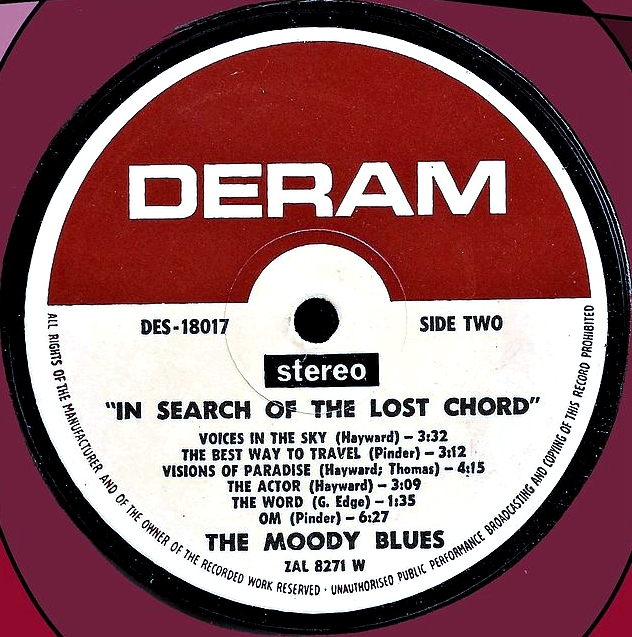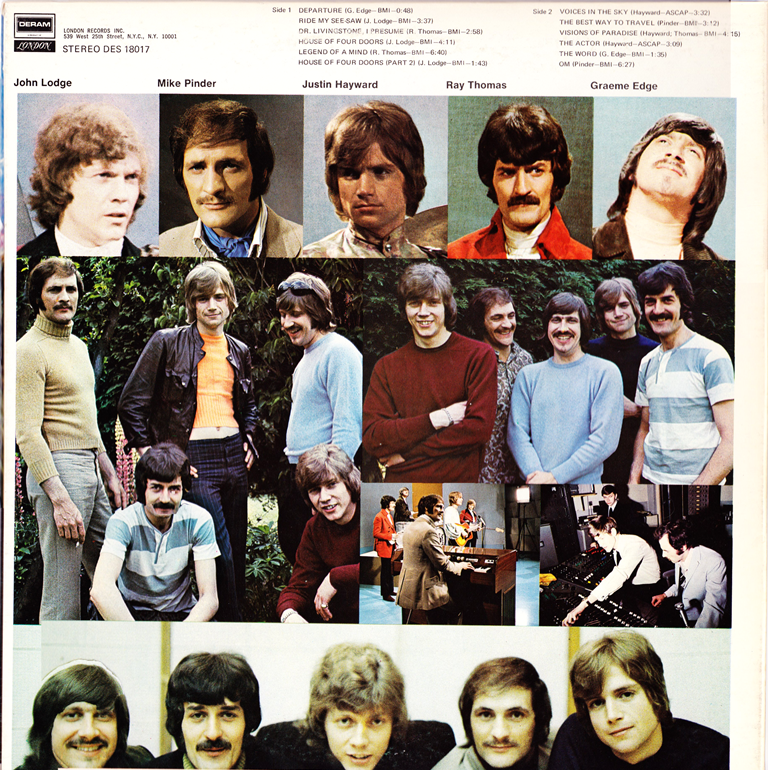Displaying items by tag: Moody Blues
The Essential Boomer Album Collection - In Search of the Lost Chord
 One of the greats in the first wave of “stoner” albums, the Moody Blues’ In Search of the Lost Chord was actually the band’s 3rd studio album, but the first to make its presence known on American album charts.
One of the greats in the first wave of “stoner” albums, the Moody Blues’ In Search of the Lost Chord was actually the band’s 3rd studio album, but the first to make its presence known on American album charts.
Of course, the band had been part of the British Invasion that was touched off by the Beatles in 1964. They scored a significant American hit with their single “Go Now,” hitting the U.S. Top 10 in 1965. But their first album didn’t sell in the States in any great number.
The band then went through a small personnel change and a big change in musical direction. Original Moodys John Lodge, Ray Thomas & Graeme Edge were joined by Justin Hayward & Mike Pinder. Their musical focus changed from American R&B to the then-emerging progressive rock sound that was fusing classical music styles and instruments with the guitars & drums of rock & roll.
Their second album, Days of Future Past, released in 1967, was actually the first album to showcase what we came to know as the classic Moody Blues' sound. They recorded that album with the London Symphony Orchestra. But again, the album failed to dent the American charts (at least right away).
 So, for their third LP, the lads decided to forego the orchestra and try to play as many instruments as the could by themselves. Like DOFP, In Search of the Lost Chord would also be a “concept” album about exploration and discovery, both physical and intellectual.
So, for their third LP, the lads decided to forego the orchestra and try to play as many instruments as the could by themselves. Like DOFP, In Search of the Lost Chord would also be a “concept” album about exploration and discovery, both physical and intellectual.
Obviously drenched in the emerging hippie and drug culture of that period (with cuts like “Thinking Is the Best Way to Travel” and “Legend of a Mind” – an homage to LSD and Timothy Leary, who seemed to be everywhere proselytizing for its use), the album also leaned heavily on instrumentation borrowed from the classic music of India (then being popularized by the Beatles’ George Harrison). The Moody Blues displayed tremendous versatility playing some 33 instruments on the album’s various tracks.
By the time of the album’s 1968 release, American radio was evolving with FM stations in larger cities becoming the launch pad for a new format, first labeled “progressive rock” and then, “album rock.” Thanks to these new arbiters of rock & roll taste, In Search of the Lost Chord broke through, especially with tracks like “Ride My See-Saw,” “Voices in the Sky” and the album’s closing track “Om.” With this new form of airplay, the LP reached #23 on the American charts. Not as impressive as some of the group’s subsequent albums, but high enough to secure the band’s until-then shaky future with their record label (UK’s London Records).
 Finally getting recognition on both sides of the Atlantic, each of the Moodys’ subsequent albums continued to sell better and better until A Question of Balance finally reached the Top 5 behind a solid hit single, “Question.” Seventh Sojourn (actually the group’s 8th album) finally hit the #1 spot. “Nights in White Satin” from DOFP was re-released and this time raced up the Billboard Hot 100 and propelling the album onto the American album charts 5 years after its initial release – hitting #3.
Finally getting recognition on both sides of the Atlantic, each of the Moodys’ subsequent albums continued to sell better and better until A Question of Balance finally reached the Top 5 behind a solid hit single, “Question.” Seventh Sojourn (actually the group’s 8th album) finally hit the #1 spot. “Nights in White Satin” from DOFP was re-released and this time raced up the Billboard Hot 100 and propelling the album onto the American album charts 5 years after its initial release – hitting #3.
But the Moodys’ rise to fame really began with the album no self-respecting hippie in 1968 would have been without: In Search of the Lost Chord.

Pop Up Player
Latest Posts–Movies & TV
-
The BOO Tube
Local TV Horror Hosts – most of us had ‘em. In New York and northern Jersey, it was Zacherley (aka John Zacherle). In L.A., it was Vampira. Milwaukee had Dr. Cadaverino and Tampa had Dr.…
-
Halloween Movie Ideas - Take 2
GORGON (1964) We were born too late to experience the great Universal horror films in first run theaters. Instead, we watched them on our local TV station’s “Shock-Horror-Monster-Chiller-Nightmare Theater.” You remember. Those late night weekend…
-
Halloween Movie Ideas
I WALKED WITH A ZOMBIE I Walked with a Zombie may be the best movie with the dumbest title in motion picture history. Cranked out by the b-movie horror unit at RKO pictures in 1943,…
-
Now Playing at the Boomtown Drive-In: "I Married a Monster from Outer Space"
Just like I Walked with a Zombie, behind the incredibly silly title lurks a pretty decent little B-movie. I Married a Monster from Outer Space was made by Paramount Pictures in 1958. Directed by Gene…
-
The TV That Time Forgot: Hazel (1961-66)
Hazel was a very popular sit-com that ran for 5 seasons (4 in full color), producing 154 shows, that was also quite popular in syndication. The show was based on a popular one panel cartoon…
-
The TV That Time Forgot: Annie Oakley
There was a time when Westerns dominated television programming so thoroughly that it was tough (with no home video, no streaming, and just 3 networks if you lived in a city big enough to have…


